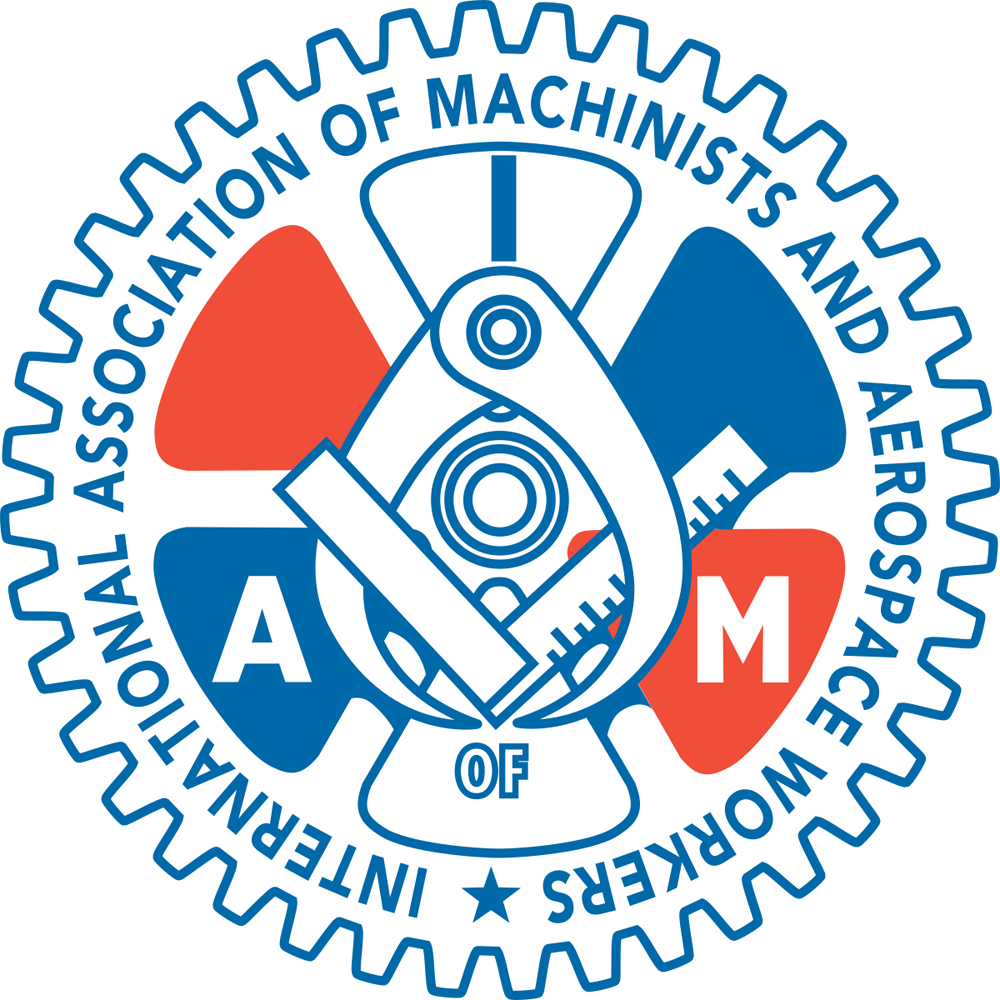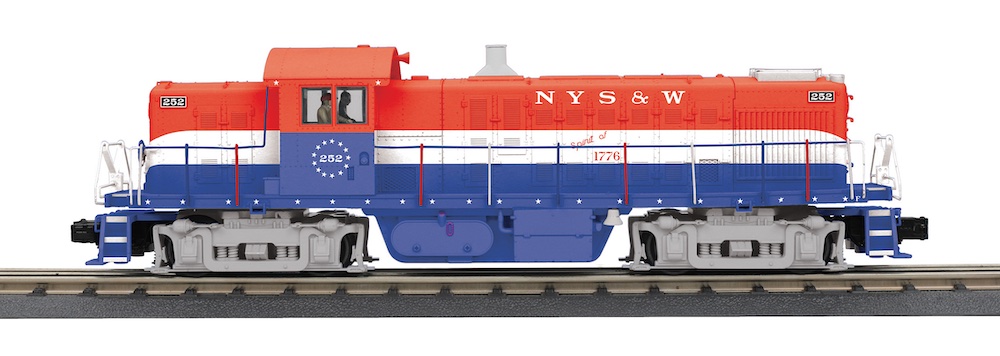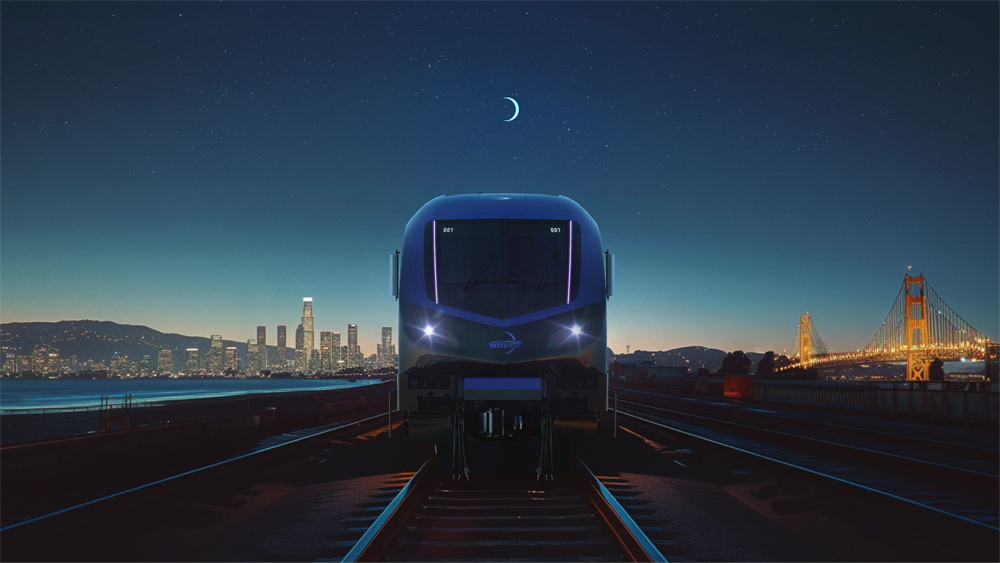O gauge F40PH diesel from MTH
Price: $499.95 (No. 20-20683-1) Min Curve: O-31 Cmd Low: 2.3 smph Cnv Low: 2.9 smph High: 73.6 smph Drawbar pull: 1 lb., 2 oz. Features: Two can-style motors, ProtoSound 3.0 command and sound system, smoke unit Current-production road names: Amtrak (Phase III and Phase IV), MBTA, Metra, VIA Rail
For more information: “The little locomotive that did,” Trains Magazine December 1999
When the National Railroad Passenger Corp. (Amtrak) was established in 1971, it had the unenviable job of sorting through an odd collection of locomotives and rolling stock thrust upon it by railroads desperate to escape the ongoing losses caused by running passenger trains.
Amtrak had to rationalize its collection of rolling stock and try to make sense of a fleet from a variety of makers, some with batteries and steam lines and others using head-end power (electricity provided by a generator in the locomotive). The locomotive fleet was only a bit better; as with the passenger cars, the age and origin of the motive power varied.
An early goal was the replacement of the many Electro-Motive Division E8 diesels. The presumed locomotive choice for long-distance service was the SDP40F, an offshoot of EMD’s masterful SD40-2. This was a ruggedly constructed six-axle, 3,000-horsepower freight engine modified for passenger service. It was wrapped in a cowl and had capacity added for carrying 3,500 gallons of water to service a steam generator. Amtrak ordered 150 of them.
Electro-Motive delivered the first units in 1973. Thirteen derailments occurred over the next three years. They were attributed to the SDP40F’s trucks and vibration, but the locomotive’s enormous water capacity seemed to be the culprit. As one observer noted, “Imagine 14 tons of ‘surf’s up’ hitting the side of a big locomotive as it enters a curve at 50 mph.”
Fortunately, in 1975, Amtrak had ordered its first batch of a new four-axle passenger locomotive from EMD. Intended for shorter runs than the SDP40F, the F40PH was a boxy, 3,000-horsepower derivative of the GP40 road diesel.
The “P” stood for “passenger” and “H” for “head end power.” This locomotive proved to be exceptionally reliable and versatile, a unit that, for many years, would be the face of modern passenger and commuter railroading in the U.S.
It is difficult to assess with accuracy how many of the original 150 F40PHs are still operating – either as a locomotive or as a control car. So I did a quick search of www.railpictures.net for F40PH images with 2017 photography dates and found that no fewer than 15 railroads and other agencies currently use these diesels.
Opening the box
My first impression is that the O gauge F40PH from MTH is a solidly built model. Weight is a good thing with diesels, not just steamers!
The model comes with an optional snowplow that you can affix to the front with the two screws included. Otherwise, the pilot has the expected add-on air-brake and multiple-unit control cables as well as an add-on uncoupler arm.
Since the pilot has no deck, 1:48 scale hostlers will need to climb up the grab irons on both sides of the nose. There are additional grab irons on the top of the nose as well as in front on either side of the headlight. The running lights are located in the lower corners, just above the pilot. Two sand filler caps are near the side grab irons.
There are windows in the cab doors, but the other six cab windows are larger and seem to provide good crew visibility. The doors open, and there are four wiper arms above the leading windows. Speaking of the doors, they have handrails and add-on steps. There is an additional door on the fireman’s side, with the crew member access being up and over the fuel tank.
Above the windows is another headlight, along with illuminated number boards and classification lights.
The roof has an air-conditioner unit above the cab and an antenna. A distance behind the AC unit are the exhausts for the smoke unit. Following that is an add-on whistle and then the first of four see-through grills for low-profile cooling fans.
The sides offer a bit more to see than on a typical F3. You have rivet and seam detail and even some hinges. A bit farther up there are see-through metal screens. The silver paint really accents the texture of the screens, especially the four near the rear.
The rear of the locomotive has a deck with a safety chain. The back of the shell has a door with a porthole, a line of grab irons up the fireman’s side, and two grab irons on the engineer’s side. There is a backup light in the center, just above the door. Two classification lights are about equal height. There are two square indentations below the class lights. If you look at the lowest part of the end of the shell, you’ll see a cast-in sand valve access hatch (this mirrors the front)!
An 1,800-gallon fuel tank is tucked under the frame, along with air reservoirs. The three red-painted caps on the fuel tank are neat details. They represent different fuel fittings, any of which may be used by a host railroad. The F40PH had to be prepared for different connections on different lines.
Painting and decoration for this model were superb. Lines and numbers were sharp, and the colors were vivid.
On the test track
Our sample performed well on our test track. The low-speed average in command mode was 2.3 scale miles per hours, while the conventional mode average was 2.9 scale miles per hour.
Our high-speed average was 73.6 scale miles per hour. The rather compact nature of the locomotive seemed to hug the curves better than some of the larger/taller diesels I’ve tested on the same track.
The sounds were interestingly different from other diesels. When the MTH model was idling, I kept hearing a noise that I couldn’t decide if it was authentic noise or a problem in the sound system.
Classic Toy Trains Editor Carl Swanson (my boss and former editor of Passenger Train Journal magazine) assured me the sound was correct, having to do with head-end power generation when the locomotive was idling. The prime mover and increasing revs sounded great. The horn really stood out for me, maybe because it has been more than 20 years since I’ve heard an F40PH. Very cool!
I’m impressed with the MTH F40PH. It sounds good, and its performance is rock solid. Better yet, the F40 manages to stand out in a world of hood units. It looks great on the point of a passenger train. With three or four dummy F40s, it will look sporty on the front of a freight train as well!













